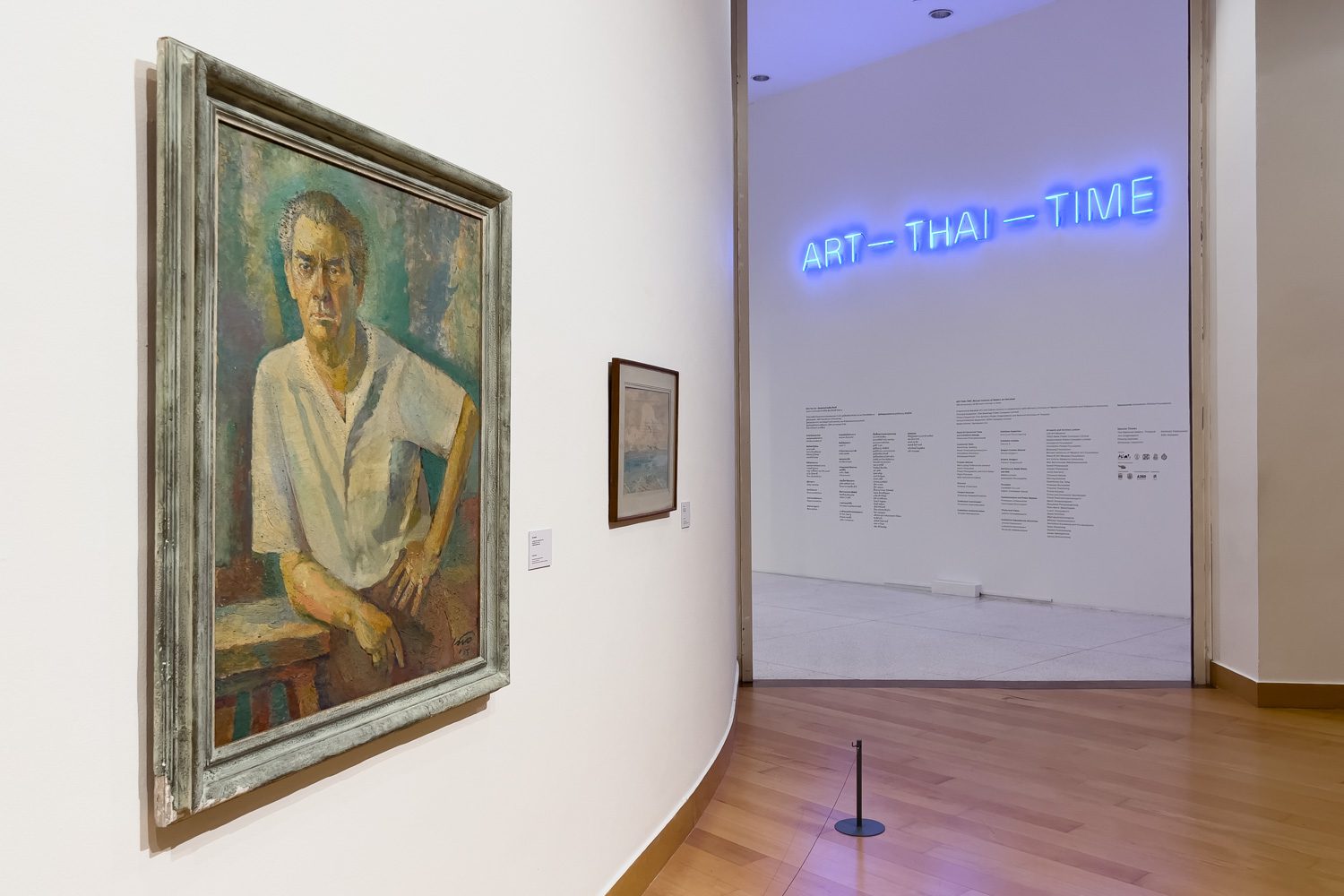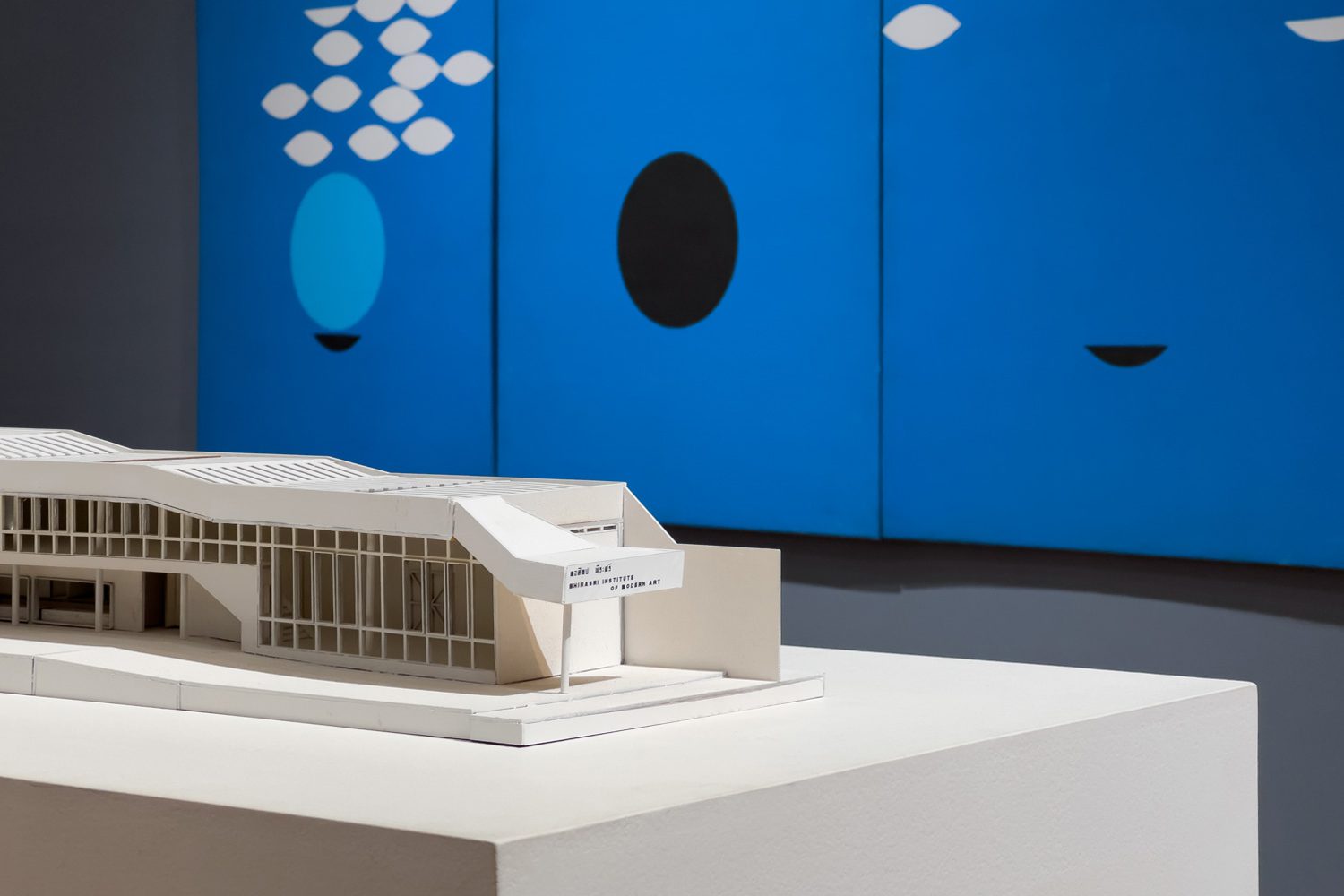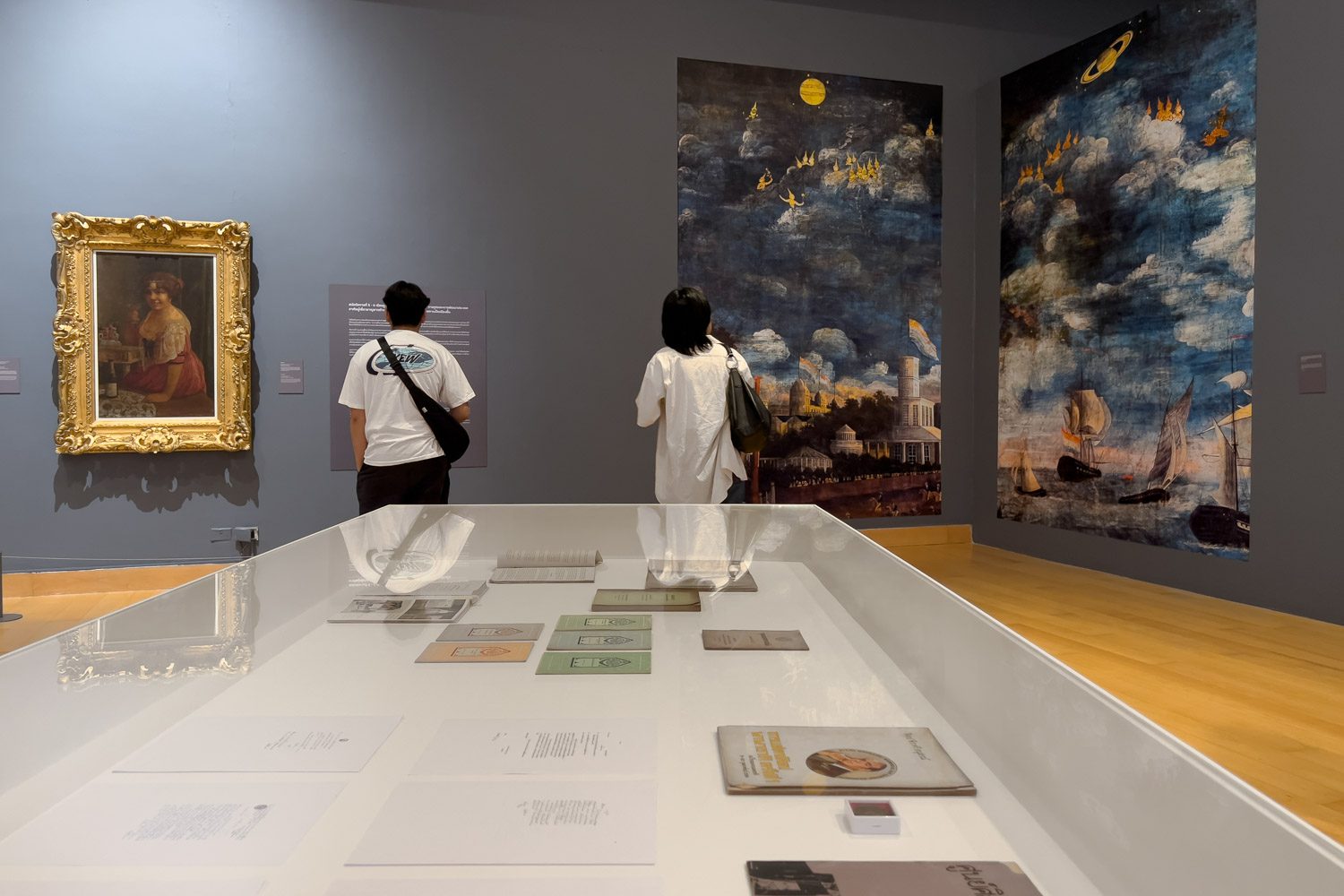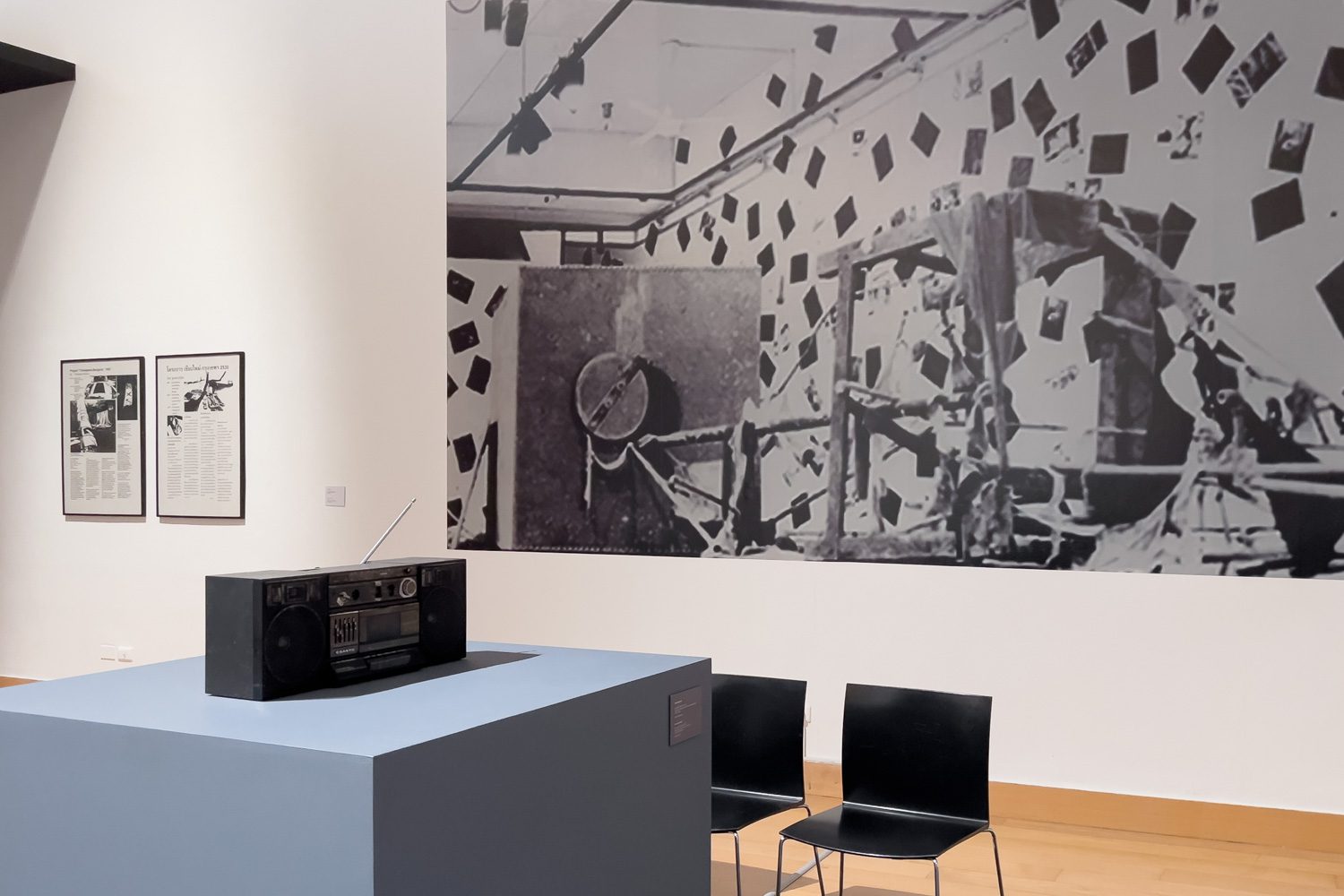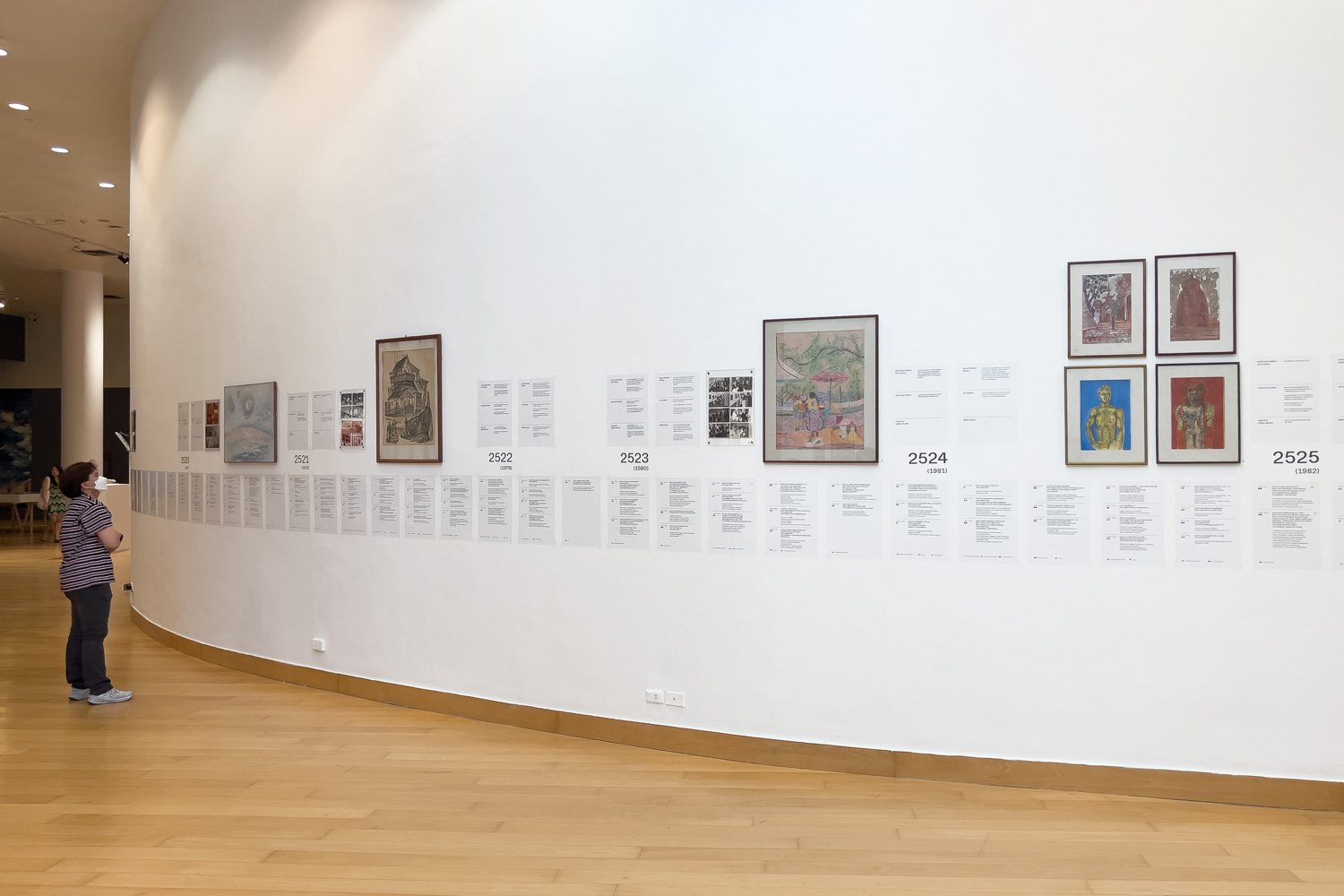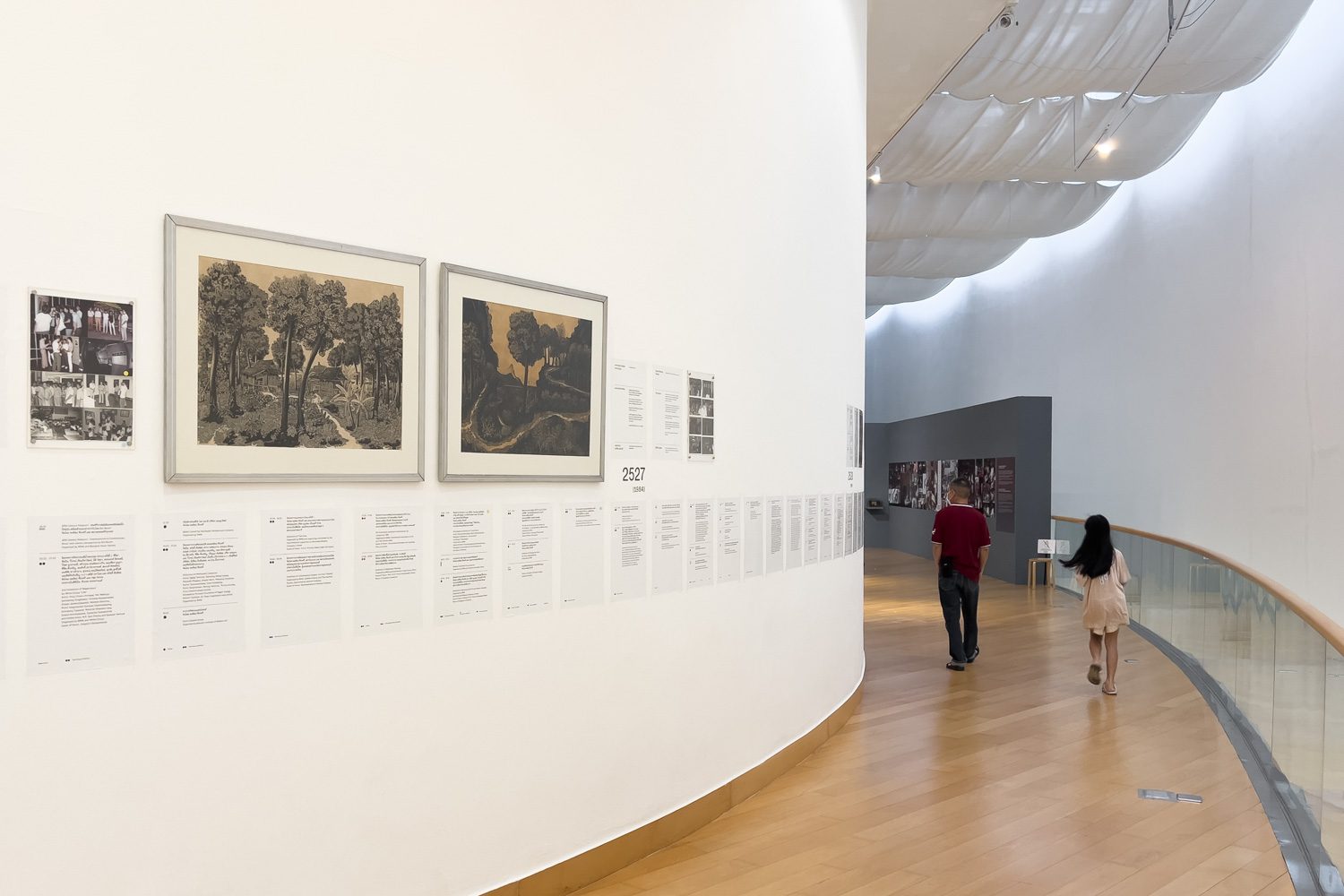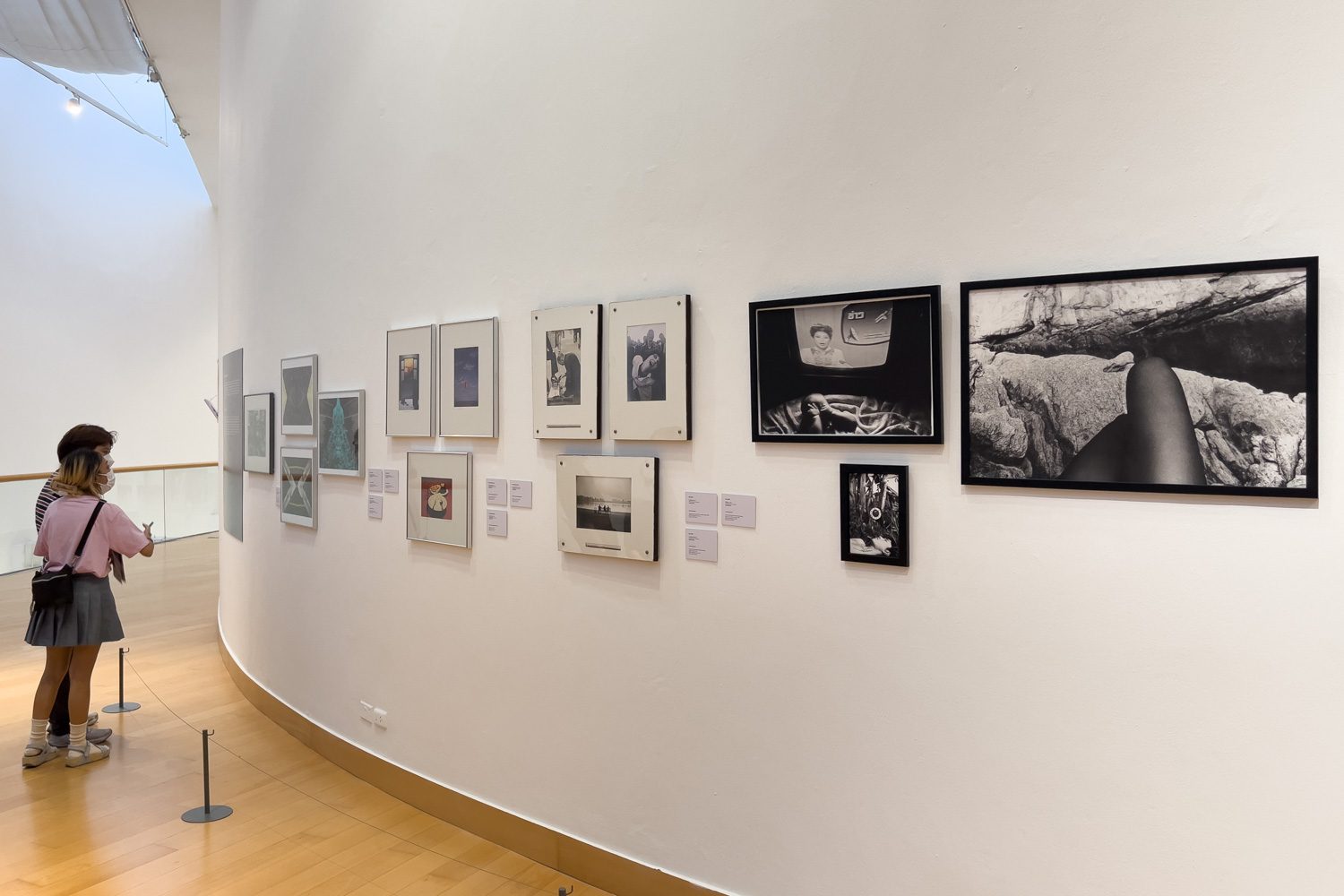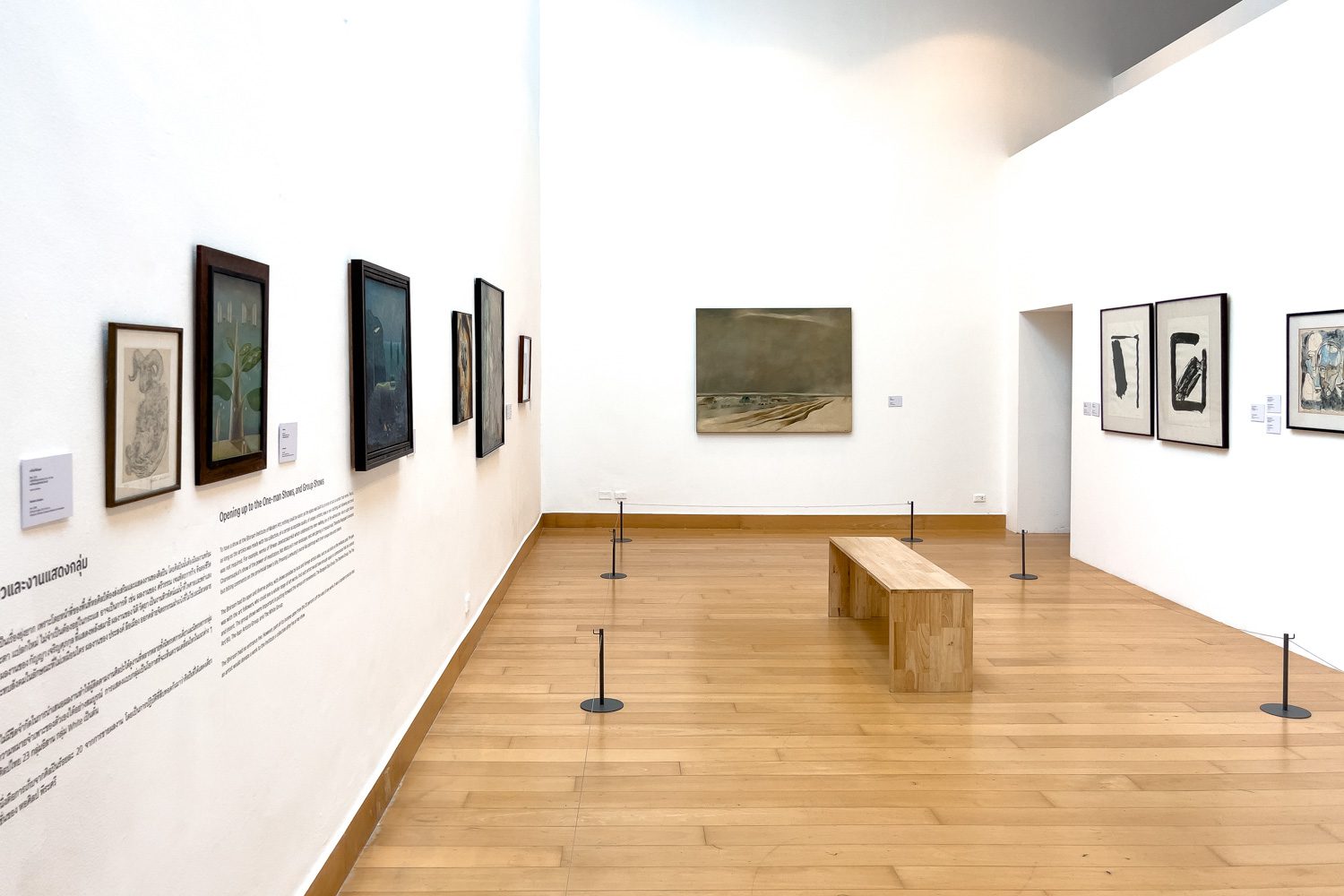‘ART-THAI-TIME’ IS AN EXHIBITION THAT BRINGS TOGETHER ARTWORKS FROM THE BHIRASRI INSTITUTE OF MODERN ART SINCE IT WAS FOUNDED AND RECOUNTS THE DEVELOPMENT IN CONTEMPORARY ART WHEN CONCEPTS OF ‘THAI-NESS’ WERE EMPLOYED AS A MEANS TO BOLSTER POLITICAL IDEOLOGIES
TEXT: VICHAYA MUKDAMANEE
PHOTO: KETSIREE WONGWAN
(For Thai, press here)
‘ART-THAI-TIME’ is an exhibition that brings together artworks and archives from Thailand’s first public art museum, Bhirasri Institute of Modern Art. Bangkok Art and Culture Centre (BACC), Bhirasri Institute of Modern Art Foundation, and Silpakorn University have joined forces as the co-organizers of the exhibition, which will run from May 9th through August 20th, 2023, in the main exhibition room on the eighth floor of BACC. The curatorial team is led by Chatvichai Promadhattavedi and includes Numthong Saetang, Narongsak Nilkhet, Sitthidham Rohitasuk, and Paisal Theerapongvisanuporn. The exhibition comprises works of art from Bhirasri Institute of Modern Art Foundation’s collection as well as those from the collections of government agencies and private owners. It additionally features archived other forms of art works from musical compositions, films, theaters, and performances, put together to show the landscape of Thailand’s contemporary art scene from the early 2500s (1957) up until the year 1988, when the Bhirasi Institution of Modern Art closed down.
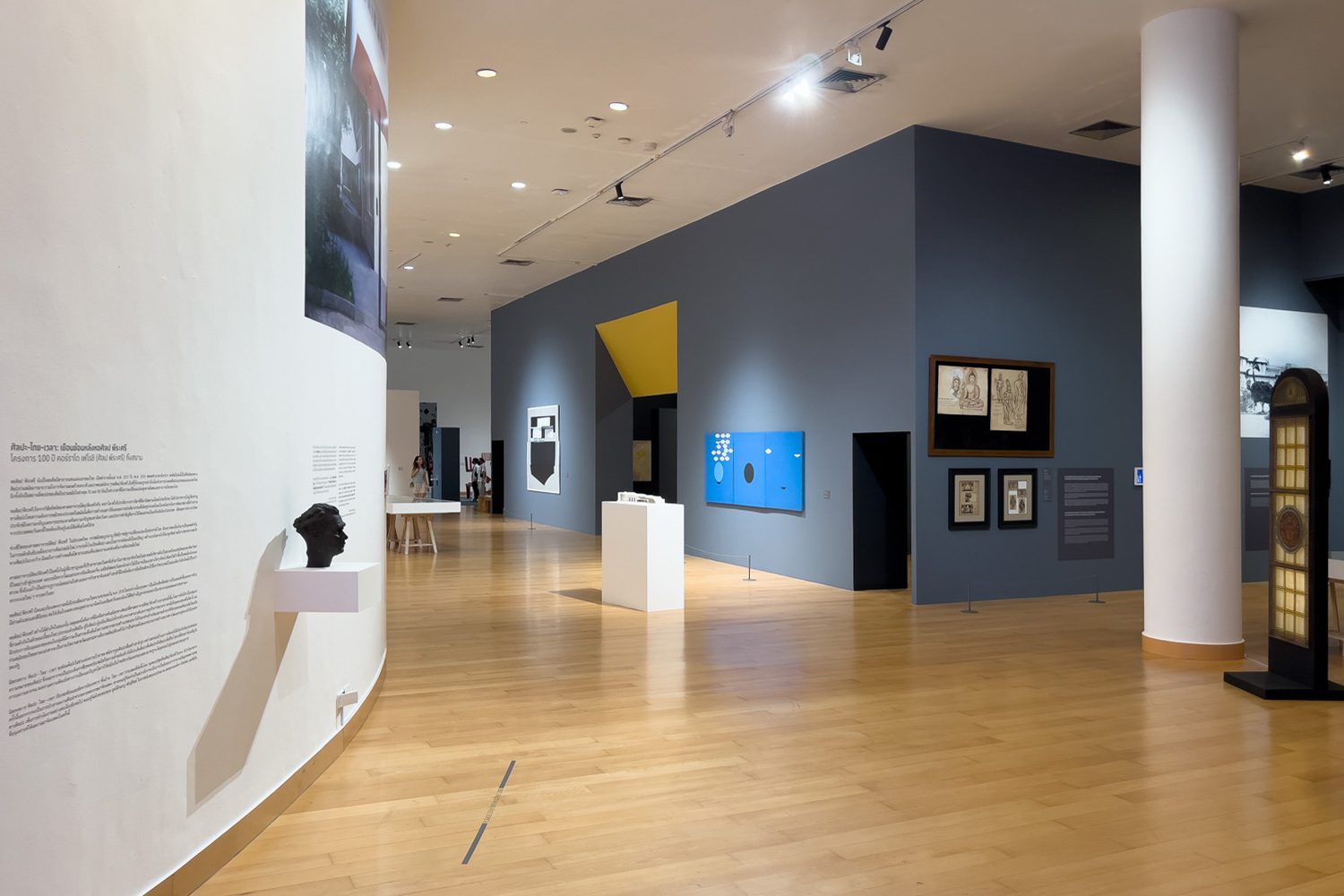
The exhibition is a recollection of the artistic endeavors that the Bhirasri Institute of Modern Art had seen through its fourteen-year history, as well as its significance as a staple of Thailand’s Contemporary art that constantly clashed, counterbalanced, and interacted with the country’s social context at the time. Thousands of works and hundreds of exhibitions produced by Thai and foreign artists, both budding and experienced, from young, middle, and older generations were part of the Bhirasri Institute of Modern Art. These works and exhibitions reflect the diversity and differences of styles, ideas, and ideologies. There were works that were driven by conservative beliefs and aimed at preserving and fostering traditions. Meanwhile, there were artistic creations that were more focused on progressive experimentation and directed their attention at critiquing, deconstructing, and questioning various aspects of the existing social structure.
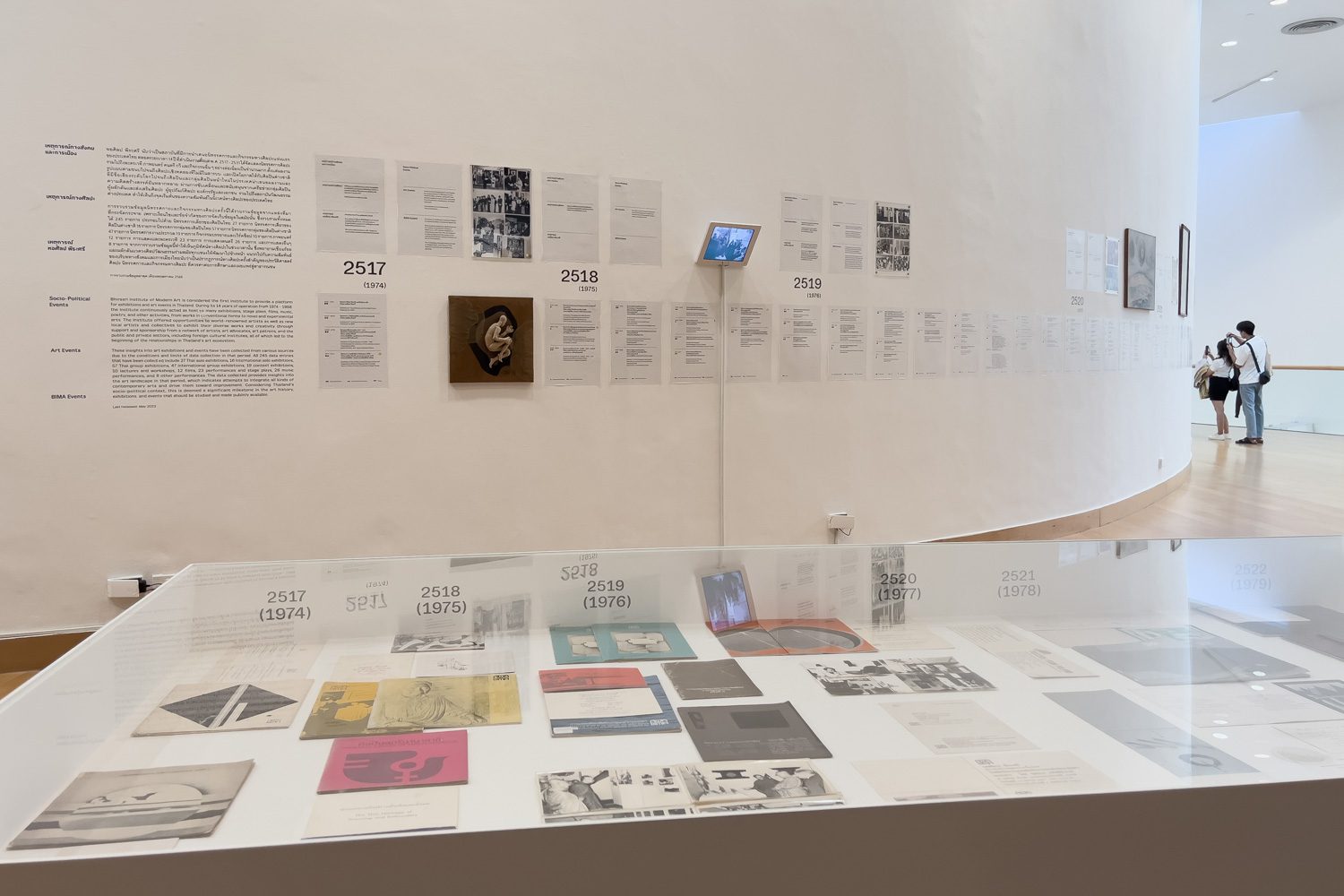
The clash of all these differences played a significant role in the evolution of the contemporary art scene in Thailand. Additionally, it sparked conversations, expressions of underlying identities, and searches for new facets and uncharted territories for the art community in the long run. Every component of the exhibition is comparable to invaluable lessons that recount the movements in contemporary art and the development that occurred alongside the shifting landscapes of sociopolitical contexts and environments at the height of the Cold War, as the country strived for internationalization and fought for freedom of expression amidst conflicts over political ideologies, the Green Wave, the calculated glorification of the monarchy, and the resurgence of traditional art.

The key figure who served as the inspiration for the inception of the Bhirasri Institute of Modern Art is none other than Professor Corrado Feroci, more commonly recognized as Professor Silpa Bhirasri. Professor Bhirasri, an Italian sculptor, embarked on the journey that brought him to Siam during the reign of King Rama 6 in 1923. He served as a government official and was behind the creation of numerous iconic sculptures and monuments for various Siamese and Thai government agencies. Professor Silpa Bhirasri played a crucial role in establishing Western art education and practices in Thailand. This endeavor began with the founding of the School of Fine Arts, which operated under the Fine Arts Department of Thailand. Over time, this institution evolved and eventually gained official recognition and a new identity as Silpakorn University. Professor Silpa Bhirasri, unfortunately, passed away in 1962, during a period marked by the Cold War and Thailand’s political landscape, which was inclined towards a new global order led by the United States. It was a time when numerous political interventions exerted influences and imposed policies that encompassed and affected not only politics but also economic developments and the ways of life of the people who lived in Thailand.

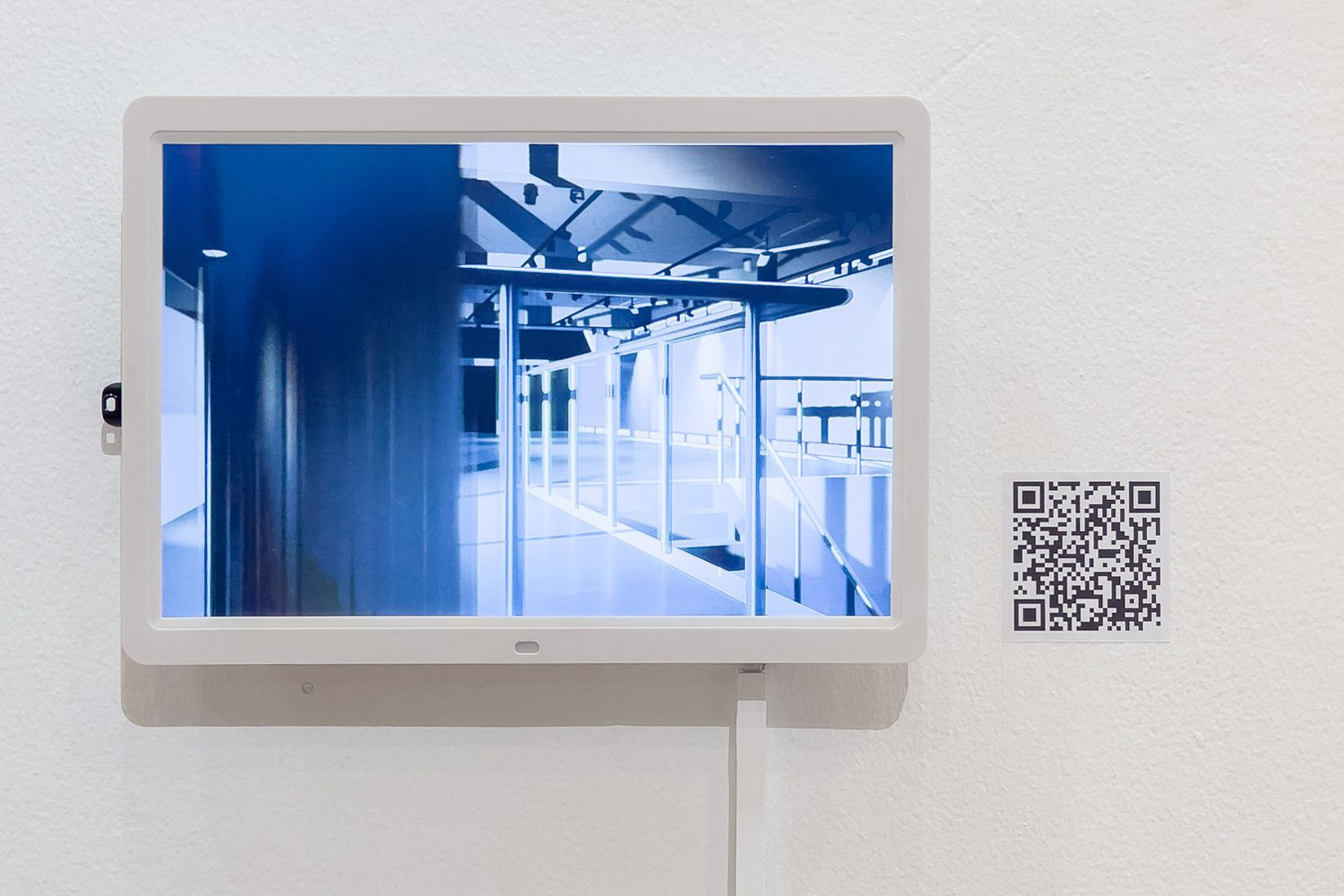
The contemporary art community in Thailand was in its infancy at the time. Several private art galleries were starting to emerge, albeit sporadically. Examples of these include the Bangkok Art Center, the Art Exhibition Room at the Suan Pakkad Palace, and the Bangkapi Gallery, among others. Thai artists who had been pursuing their studies abroad were beginning to return to their home country. However, despite exhibitions taking place here and there and exhibition spaces and galleries showing, buying, and selling artworks, Thailand still lacked a dedicated public gallery that prioritized the organization of exhibitions and art-related events. There was a need for a centralized hub that would serve as the focal point for modern and contemporary art in the country.
The establishment of the Bhirasri Institute of Modern Art in 1965 was to carry on Professor Silpa Bhirasri’s legacy and motivations, with the place serving as a memorial to his contribution. The fundraising campaign for the construction of the Bhirasri Institute of Modern Art’s building was initiated and successfully completed, followed by its inaugural operation in 1974. The modern architecture of the structure designed by M.L. Tridhosyuth Devakul was constructed on a parcel of land that was rented out at a comparatively low price by M.R. Pantip Paribatra, the Chairman of the foundation himself. The Bhirasri Institute of Modern Art, which housed exhibition spaces, a main hall with multifunctional uses, a library, and an outdoor ground, had over time established itself as a public space that actively promoted and facilitated a variety of art-related activities.

The topic of defining and understanding ‘Thai-ness’ was of great significance within the art and cultural landscape of Thailand during the B.E. 2500s, encompassing a multitude of interpretations and various aspects. The phenomenon also served as a significant inspiration for numerous art works exhibited at the Bhirasri Institute of Modern Art. From its inception, the Bhirasri Institute of Modern Art saw works of art whose concepts of ‘Thai-ness’ were employed as a means to bolster political ideologies, specifically between conservative and liberal factions. Art was a vehicle that helped convey the varying individualities and identities of local communities. At the same time, it was being utilized to express an external perspective that placed emphasis on merits and values, particularly those validated by Western standards. It was used to evoke a nostalgic sentiment that hoped to revive the significance of the country’s key institution, which had been diminished since 1932. The promotion of nationalist ideology was undertaken in the name of encouraging social harmony and uniting the people to defend against external threats.
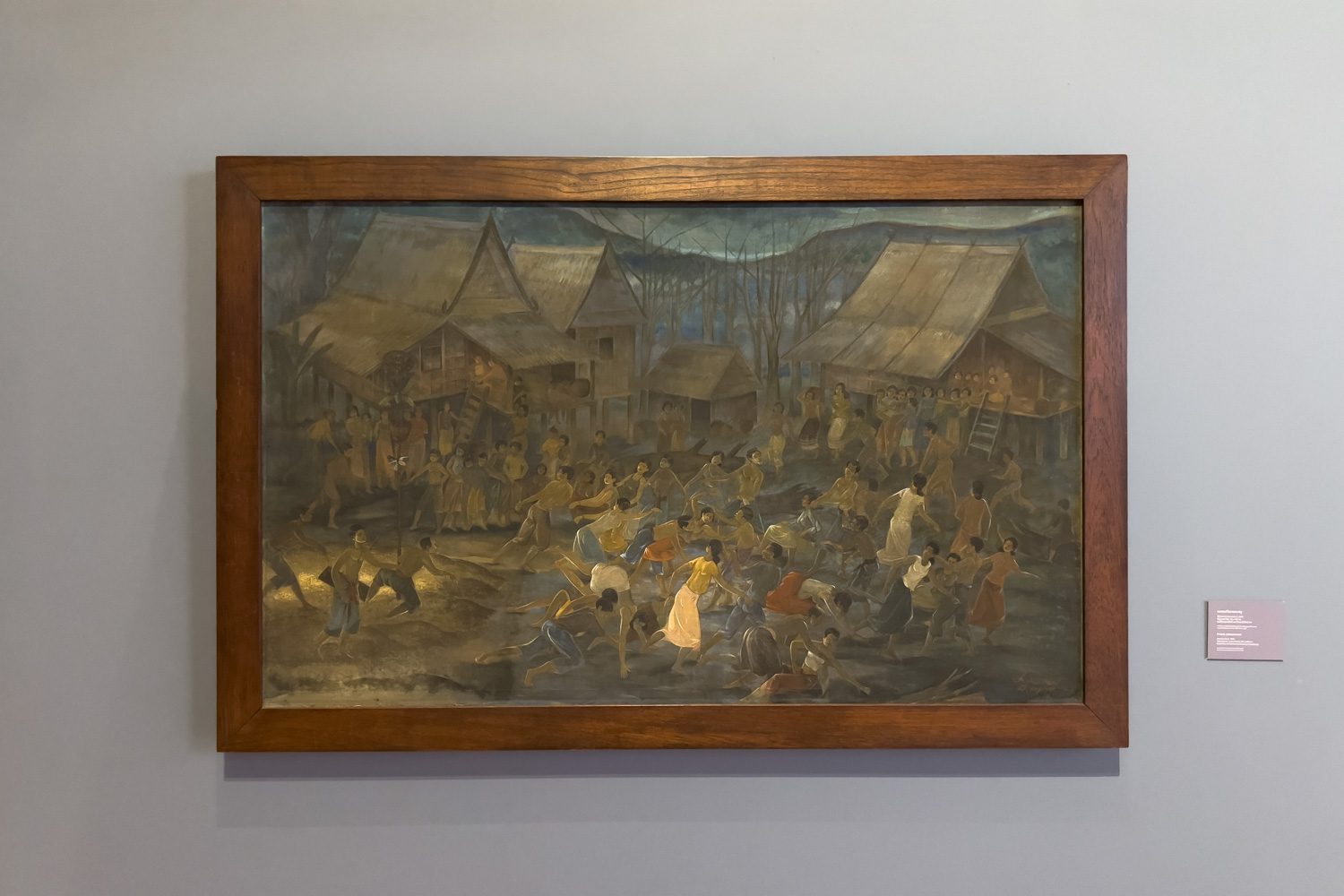
An incident that exemplified an effort to challenge the concept of ‘Thainess’ occurred during the protest against the outcome of the 1964 National Exhibition of Art, which took place just two years after the passing of Professor Silpa Bhirasri. The protest was an ideological clash between the proponents of the abstract movement, which was gaining popularity among avant-garde artists, and those who favored traditional art, which still held power over the tastes and sway of the general public and the elite. The painting titled ‘Festival No.2′ by Prapat Jothapraser, which was the subject of controversy, is now owned by Silpakorn University’s Art Museum and is also one of the works displayed at the exhibition.


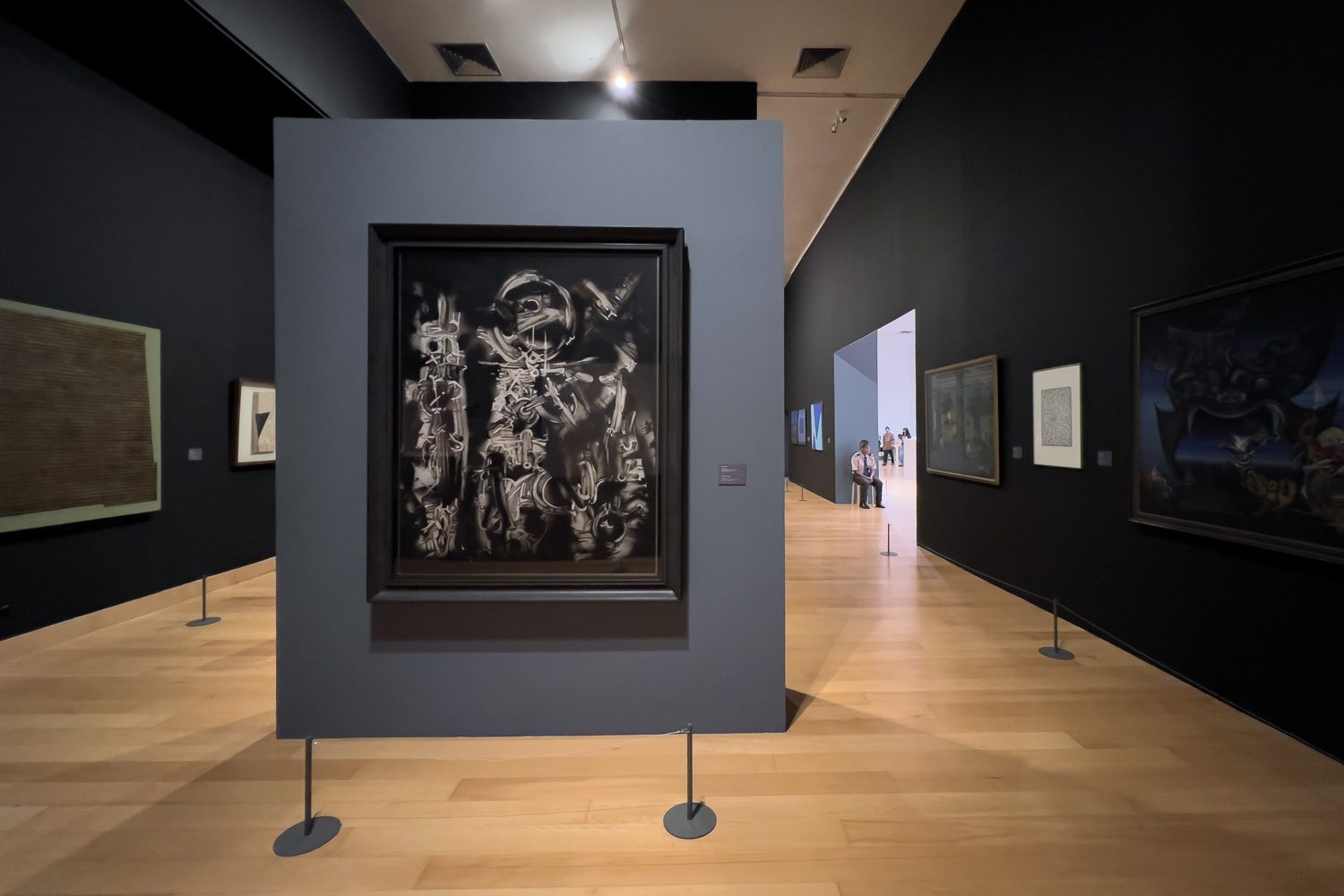
ART-THAI-TIME presents abstract artworks created by Thai artists who gained prominence during the early years of the Bhirasri Institute of Modern Art. Some notable artists featured include Damrong Wong-Uparaj, Thongchai Rakpathum, Pratuang Emjaroen, Pishnu Supanimit, Ithipol Thangchalok, Kanya Charoensupkul, and Vichoke Mukdamanee. Additionally, the exhibition includes traditional artworks that depict the Thai way of life and traditions through diverse artistic styles and mediums.
One of the most famous artworks shown at the exhibition is a painting by Chalermchai Kositpipat. The work reimagines ‘Thailand’ by capturing the essence of the local way of life through its new, traditional artistic style and beautifully portraying the customs, traditions, and beliefs that shape the daily lives of the people in rural Thailand. Another important work is the painting by Panya Vijinthanasarn, with narratives, patterns, and forms that are deeply rooted in Thai traditions. However, the artist’s unique touch lies in the incorporation of imaginative, contemporary elements, resulting in an idiosyncratic style of Thai art that has had a profound impact on subsequent generations of Thai artists and continues to influence them to this day.

The exhibition’s contents focus in part on the student-led political uprising that sparked and demanded changes to the country’s political system. It also explores the violent clashes between government-backed forces and the protesters, who were made up of university students and members of the general public, as well as the polarizing political ideologies that emerged between 1973 and 1976. The Thai Artist Coalition meticulously recreated signs and cutouts denouncing the military dictatorship prominently displayed on both sides of Ratchadamnern Road at the height of the demonstration. The incidents are highlighted as important historical events that were contemporaneous with the establishment of the Bhirasri Institute of Modern Art. After its inauguration, numerous artists utilized the premises of the Bhirasri Institute of Modern Art to showcase their politically motivated artworks.
One notable event was the ‘Art of the People’ exhibition organized by the Dharma Artist Collective. This exhibition, held in October 1976, portrayed the tragic Thammasat University massacre that occurred on October 6, 1976. The exhibition had been forced to shut down, resulting in the unfortunate destruction of certain artworks. In spite of that, it was a defining time period in history, as art and politics continue to find their way into the public sphere, particularly through the mediums of experimental art, performance art, and installation art.
The Bhirasri Institute of Modern Art played a significant role in providing artists with a supportive platform to create and showcase their artistic ideas, which often pushed boundaries and embraced experimentation. This included various art forms such as video art, photography, installation art, and performance art. Wethi-Samai/Contemp-Tre, initiated by Chumpon Apisuk, is an exemplary endeavor that has established an arena for experimental artistic expression. This platform in particular, has provided performance artists with the opportunity to showcase their works, which seamlessly blend various disciplines of live performance, including theater, poetry reading, dance, and music. The initiative sparked a multitude of experimental works centered on social movements and issues. Consequently, it evolved into a pioneering platform for Performance Art in Thailand, attracting both Thai and international artists in subsequent years.
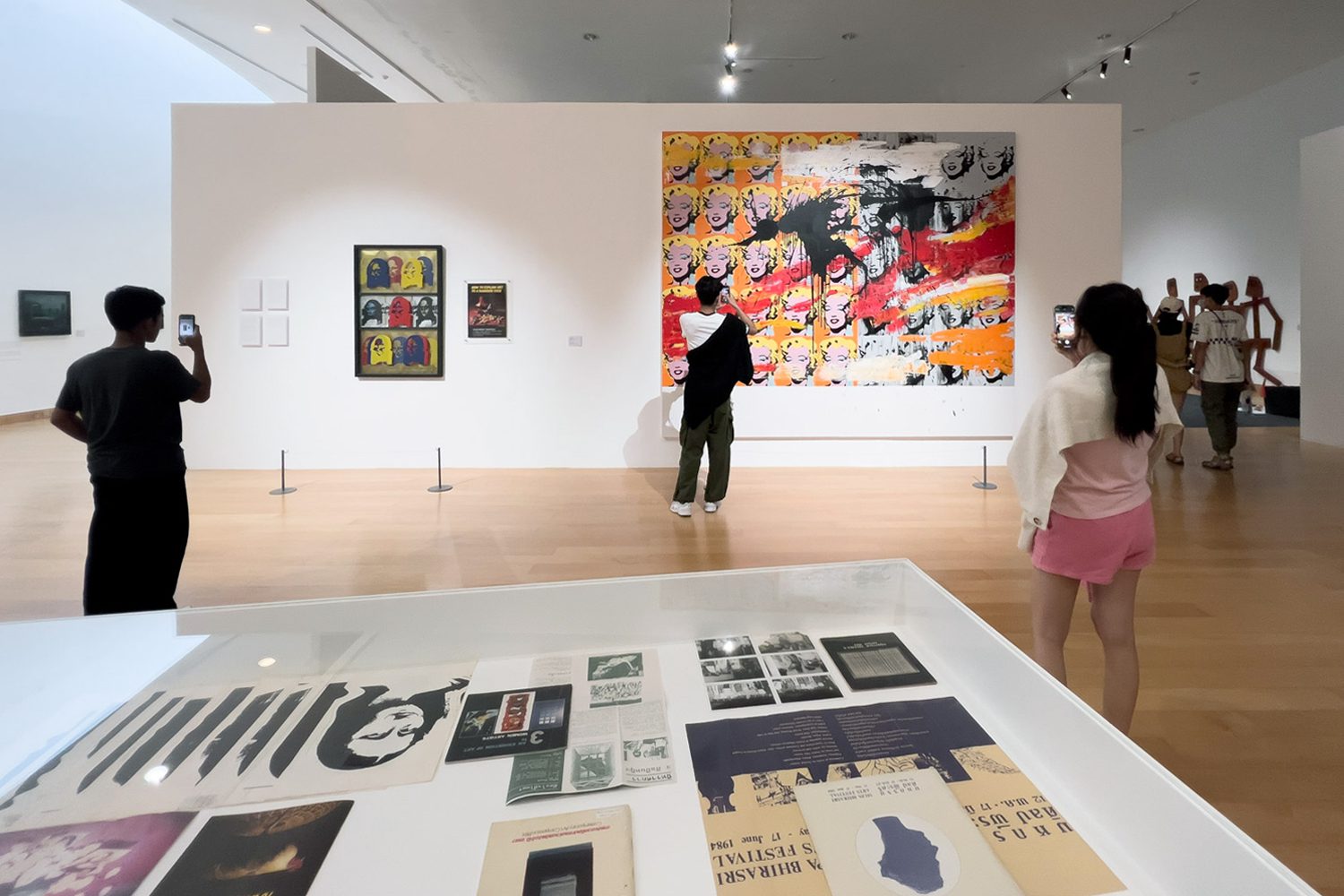
The exhibition also displays archives of significant experimental art pieces from Thailand’s Contemporary art history, including ‘Song for the Dead Art Exhibition’ (1985) by Kamol Phaosavasdi and ‘How to Explain Art to a Bangkok Cock’ (1985) by Apinan Poshyananda. The two works were intentionally created to offer a critique of the approach and pedagogy of Modernism, which was the prevailing artistic movement in the country’s contemporary art scene at the time.

ART-THAI-TIME has revived the history of the Bhirasri Institute of Modern Art after three decades since its closure through a curated presentation of archives and a timeline of photographs, old documents, and pamphlets. These items are meticulously gathered and displayed in an organized system, ensuring efficient retrieval for future reference. The exhibition encapsulates the prominent role of the Bhirasri Institute of Modern Art in Thailand’s contemporary art scene as well as its national significance. Its existence was incredibly instrumental to the zealous progress of Thai Contemporary art in general and the lives and artistic journeys of many Thai artists, including those who gained international recognition. ART-THAI-TIME is a significant lesson derived from the historical development of Contemporary art in Thailand. It serves as a stepping stone that allows people to learn and move in the right direction, in tandem with the way society is progressing in the present as well as in the future.
